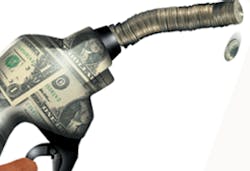Diesel prices are expected to be steady while gasoline trends downward through June, according to an Oil Price Information Service economist. This is because the deluge of refinery maintenance backlogs, which started after Hurricanes Katrina and Rita, is finally coming to an end.
This surge in refiner maintenance activity had a direct effect on both gasoline and diesel prices, as refiners had to throttle down production. One upshot of this is that energy companies were able to stockpile a significant amount of crude oil, by virtue of the refinery bottleneck.. And with refining coming back to normal levels, that should mean a halt to advancing prices—pending no more geopolitical instability or hurricanes.
For the week ending May 19, U.S. inventories of crude were at a 343.9 million barrel level—11.5 million above the same week last year. This occurred as gasoline and diesel demand actually was slightly higher than for the same period last year.
Distillate—a petroleum product that can be refined into diesel—levels were 11.4 million barrels higher than the same week last year.
Gasoline inventories, on the other hand, had taken a significant beating from the maintenance period—6.9 million barrels fewer than the same week in 2005. Although refineries built up gas inventories in preparation for the maintenance work, higher demand depleted them.
“I think we’re past our spike for gasoline,” OPIS markets editor Denton Cinquegrana told FleetOwner, noting a 6.4-cent drop in gas prices to $2.883.
The federal Energy Information Administration warned that with gasoline demand to ramp up even more once the post-Memorial Day driving season kicks off, prices will remain above $2.60 throughout the summer.
ULSD update
On June 1, refiners will be required by federal law to allocate at least 80% of their diesel production to ultra low sulfur diesel (ULSD). Cinquegrana has not heard of any potential problems on the refinery level at this point, but it is still too early to tell, he said.
On Oct. 15, retailers will be required to sell ULSD, which will likely also bring up to a five-cent per gallon premium over the low sulfur it replaces.
“It will be hard to sell the remaining 20% (of low sulfur diesel) because the pipelines won’t ship it to outlying terminals,” Cinquegrana noted. “By Oct. 15, the low sulfur will probably be more expensive than ULSD.”
